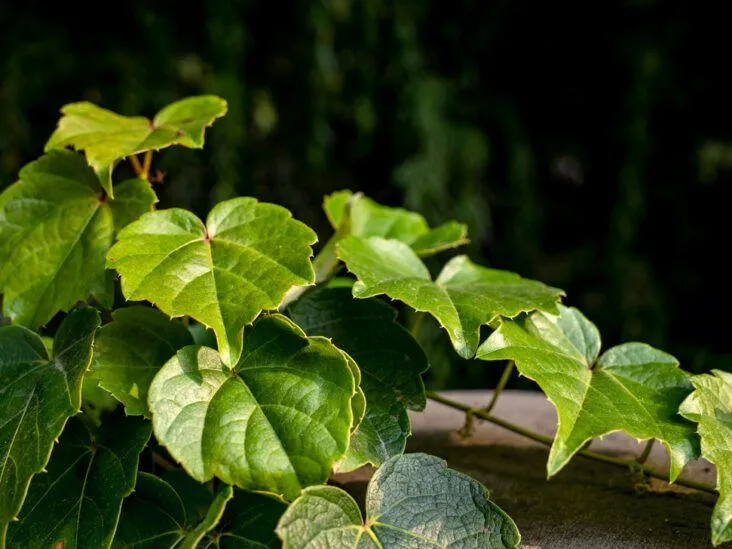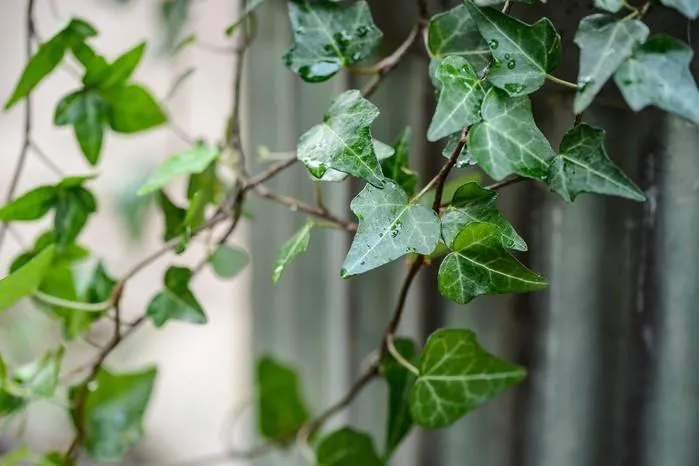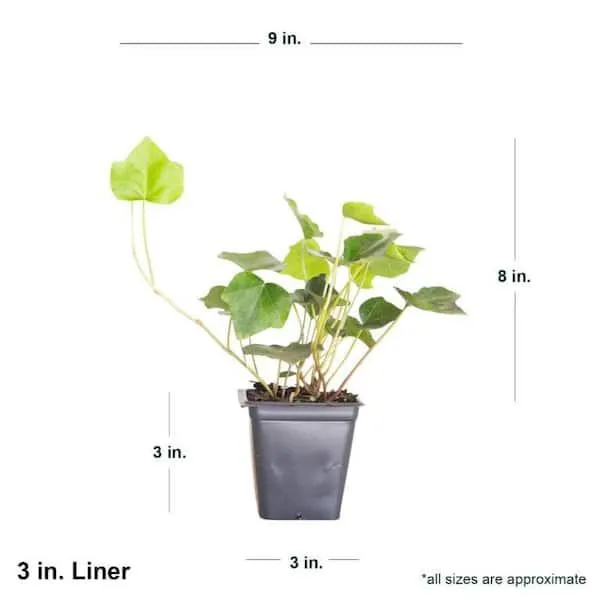The Water Needs of English Ivy – A Complete Guide
If you’re looking to add some lush greenery to your home or landscape with English ivy, you may be wondering about its water requirements. As with any plant, providing the right amount of water is key to keeping ivy healthy and vibrant. In this article, I’ll cover everything you need to know about watering English ivy based on over 15 years of gardening experience.
How Much Water Does English Ivy Need?
English ivy is considered moderately drought tolerant once established, but it still needs regular watering to thrive. As a rule of thumb, aim to keep the soil consistently moist but not soggy wet. This means watering around once every 5-7 days on average during the growing season.
However, ivy’s actual water needs can vary depending on factors like soil type, sun exposure, and temperature. As a climbing vine, ivy planted on the ground may need slightly more water than ivy grown on a trellis or wall. Ivy growing in hot, sunny spots is also more likely to dry out faster than ivy in shade.
It’s best to monitor the top 1-2 inches of soil. If it’s starting to dry out, it’s time to water. The soil should be moist but not waterlogged. Overwatering can cause root rot, so allow the soil to partially dry between waterings.
Watering Tips for English Ivy
- Water thoroughly until the soil is moistened 6-8 inches deep whenever watering.
- Use a soaker hose or drip irrigation for slow, deep watering to encourage deep root growth.
- Hand water new ivy transplants more frequently, around every 2-3 days, until they are established.
- Adjust watering as needed based on weather – water more in very hot/dry or windy conditions.
- During winter dormancy, ivy only needs water if soil becomes completely dry.
Proper watering is key to healthy, vigorous ivy growth. But don’t overdo it – finding the right balance will reward you with lush foliage year-round. Speaking from experience, sometimes the simplest consistent watering schedule works best.
Handling Different Soil Types
The soil your ivy is planted in affects how quickly it dries out. Clay and compacted soils retain less water while sandy soils drain quickly. You may need to adjust your watering based on soil type:
- Clay/compacted soils – Water less frequently but more deeply to fully saturate the tight soil pores.
- Loamy soil – Typical watering routine of 1x week usually sufficient.
- Sandy soil – Water more often, around every 5 days, and use mulch to retain moisture.
Adding organic matter like compost to heavy clay or light sandy soils can improve their water-holding capacity over time. Proper drainage is also crucial – plant ivy on mounded beds if your soil is prone to puddling.

From my experience, perennial plants prefer consistency to wet/dry cycles. Staying on a regular weekly watering schedule, adjusted for weather, usually does the trick for English ivy in most common soils.
Dealing With Drought
What if drought conditions mean water restrictions? English ivy can survive periods with less water, but it’s not ideal for long-term growth and appearance. Here are some tips:
- Water only as needed to keep soil from totally drying out, say every 10-14 days.
- Mulch 2-4 inches deep to retain moisture around plants.
- Cluster plants together so that each watering wets a larger area.
- Shelter ivy from the hottest sun if possible using a tree or lattice for extra shade.
- Newly planted ivy may need occasional deep watering for root establishment.
Ivy may drop some lower leaves but should bounce back when rains return. It’s kind of awesome how resilient plants can be during dry spells! The key is keeping soil from cracking and roots from drying out completely.
Watering Ivy in Containers
Ivy grown in pots has higher water needs due to increased evaporation. As a general rule:
- Check soil moisture daily by sticking your finger an inch deep.
- Water thoroughly whenever the topsoil starts to dry out, usually every 1-3 days.
- Use a saucer under the pot to catch overflow and keep the soil consistently moist.
- Move pots to a shady spot on extra hot days to reduce drying.
In warmer months, container-grown ivy may need watering twice a day. The soil should be kept consistently moist but not soggy-wet. Under-watering is more risky for pots than over-watering. Always empty any standing water from saucers too.
Watering During Winter
Most varieties of English ivy are evergreen or semi-evergreen, meaning they hold their leaves through winter. They only need occasional watering if the soil fully dries out.
Leaf drop is normal in very cold temps, but new growth will emerge in spring once temps rise above 45°F at night on a consistent basis. I find my ivy thrives with minimal winter water, like once every 2-3 weeks if rain is lacking.

Too much winter water can cause rot issues, so only water if the top few inches of soil are completely dry. Let nature take its course – ivy is adaptable and sturdy through winter dormancy with proper care the rest of the year.
Frequently Asked Watering Questions
Hope this guide has helped answer your questions about watering English ivy! But since we’re on the topic, here are a few additional questions I’m often asked:
Q: Can ivy grow with no water?
A: Ivy can survive short dry periods without water, but won’t thrive long-term. It needs regular moisture to stay healthy, bushy and prevent wilting/dropping leaves. Occasional natural rainfall may sustain it, but consistent watering every 5-7 days is best.
Q: How do I know if my ivy is getting too much water?
A: Signs of overwatering include yellow or limp lower leaves, brown leaf tips or edges, rotted stems at the soil line, and soggy soil that stays constantly wet. Reduce watering frequency and make sure soil can partially dry out between waterings.
Q: Will ivy survive in full sun with less water?

A: Ivy grown in full sun may need slightly more frequent watering, around once every 5 days, due to higher evaporation. It’s best to acclimate ivy to sun gradually. Provide afternoon shade if leaves are wilting even with regular watering.
I hope this guide has helped shed some light, so to speak, on your English ivy’s water demands! Let me know if you have any other questions.
English Ivy Water Requirements
| Water Needs | Daily | Weekly |
|---|---|---|
| Newly Planted Ivy | Moderate | Thorough soak |
| Established Ivy | Light | Light water |
| During Hot/Dry Spells | Moderate | Thorough soak |
| During Winter | Light | Light water |
| Potted Ivy | Moderate | Moderate water |
| Signs of Too Much Water | Leaves fall off | Brown/yellow leaves |
FAQ
-
How much water does english ivy need?
English ivy likes to stay moist, but not soaking drenched. It needs about one inch of water per week from rain or your watering can. Most houseplants like regular moisture, but not soggy soil.
-
What happens if english ivy doesn’t get enough water?
If english ivy doesn’t get enough H2O, the leaves may wilt and droop. The vines also may stop growing as quickly. At the same time, too little moisture can cause the plant to drop its tender new growth. Basically, give your ivy a drink about once a week to keep it happy and healthy.
-
How often should you water english ivy outdoors?
During hot, sunny weather, english ivy planted outside will need water around twice a week. The soil should dry out somewhat between waterings. Nevertheless, clay or compacted soils may need water more often than loose, well-draining dirt. Check the soil with your finger before you decide to water – if it feels dry an inch or two down, it’s time to give it a drink!
-
What happens if you overwater english ivy?
Overwatering ivy can potentially lead to root rot, one of the worst possible problems a plant can have. Wet soil for long periods will deprive the roots of oxygen. Strong, healthy roots are pretty resistant to too much moisture, but roots that are already damaged or diseased are more likely to develop issues with root rot. So it’s better to water ivy on the dry side to avoid root problems.
-
How long can you go without watering english ivy?
English ivy is fairly drought-tolerant and can withstand going a couple weeks without water under normal indoor conditions. However, when the soil becomes completely dry, the leaves may look limp and sad. Ivy kept indoors in low humidity can sometimes use a little sip of water even before the soil gets bone dry. Perhaps check it after 10 days if you forget to water – it likely won’t be thrilled but usually won’t perish.

-
Should you let the soil dry out between waterings?
Allowing the soil to dry out some in between watering sessions is good general practice for any houseplant like english ivy. Drying soil promotes good airflow to the roots. Soggy, wet soil for prolonged periods can potentially lead to root rot. As a rule of thumb, water english ivy when the top inch or two of soil feels dry to the touch. Then water thoroughly until the excess drains out the bottom of the container.
